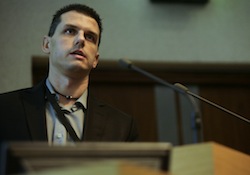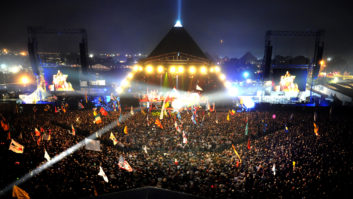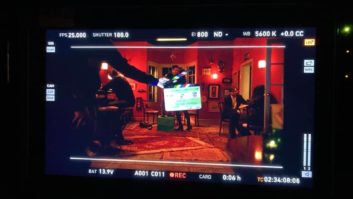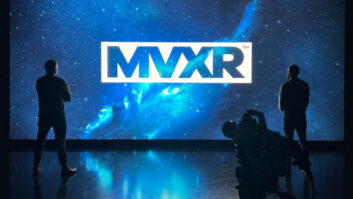
Setting up and launching a 24/7 HD sports service: GOL TV is a 24/7 football channel in Spain that launched in August 2008, and became the country’s first ‘premium TDT’ channel a year later, offering major football coverage via smartcard-enabled terrestrial digital pay-TV.
Israel Esteban, technical manager at systems integrator Unitecnic explained how while the client had decided upon an IT-based, new-media friendly workflow from the outset, there were a whole series of answers needed about the content before anybody could start designing anything. If that sounds like a statement of the obvious, various appreciative grunts from vendors in the audience suggested that the real world says otherwise!
While all La Liga (Spanish football league) and other matches produced at its Mediapro Sports Center have been exclusively HD from day one, GOL simulcasts in SD and at the time of launch, 80% of external feeds were in SD.
The company wisely decided to invest in an all-HD infrastructure. But what to do about SD archiving? Upconverting SD on demand would cut storage costs by 75%, but upconverting on ingest would save operational time downstream – and besides, the number of SD feeds would dwindle over time. The next decision was to retain the original aspect ratio, so a branded pillarbox graphic was designed for upconverted 4:3 shown on 16:9 HD.
However GOL was not out of the picture-housekeeping woods yet, as it was still grappling with the vexed issue of which HD format. While progressive scan was widely lauded by HD sports broadcasters in the US, GOL wasn’t keen on 720 line pictures and 1080p (3G) was not a real alternative at the time. So the company chose 1080i, perhaps influenced by the fact that this was the format of all Mediapro archive since 2005.
Finally, GOL decided to minimise the number of equipment brands to those they trusted over time rather than rush to ‘looks good on paper’ newcomers, earning another round of knowing nods from delegates. Even so, the system would need to straddle a wide range of equipment, from the EVS IP Director and Clean Edit production core to Wtvision and Vizrt stats and graphics, Tedial Tarsys archives and MAM, five Avid Media Composer Nitris DX post production suites and VSN Multicom automation to Anystream and Digital Rapids new media delivery, as well as link the production centre in Barcelona with playout in Esplugues 15km away.
The forward planning seemed to pay off, as Unitecnic managed to install a complete working system within three months, which was amongst the fastest turnaround of all the projects detailed at the conference.
Having considered Panasonic AVC-I 50/100, Sony XDCAM HD and Avid DNxHD recording formats, GOL opted for the latter at 100Mbps on EVS kit and 120Mbps for Avid. Matches are ingested into an EVS XT[2] in DNxHD codec natively, and depending on production and content creation demands, up to twelve simultaneous events can be streamed at the same time to the Storage Area Network (SAN).
As feeds arrive, loggers note important action and add descriptive metadata. This is integrated with the MAM system, so media becomes available instantly to journalists and editors on the production network. During live broadcast or close to live productions, operators can use either LSM remotes or IP Director stations to produce material from the EVS XT[2] servers network, with all clips and highlights transferred to the SAN.
News editors work straight from the SAN with CleanEdit and a Vizrt NLE graphics plug-in, while post production is completed on Avid. Interestingly, source material from (and completed edits to) the SAN involves no transcoding, as an Avid Transfer Manager simply re-wraps the EVS MXF data to the MXF Operational Pattern Atom (MXF Op-Atom) standard used by Avid.
After QC on an automation system client application, the material gets an ID from the management system and is ready to go to air. The programme is then transferred to the playout system or archived, depending on the channel grid. – Richard Dean





